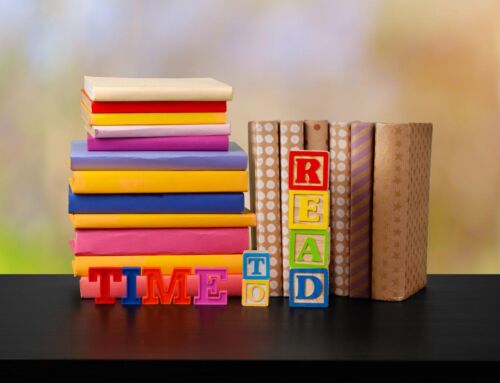IDA Structured Literacy: A Game-Changer for Students with Dyslexia
Some of the brightest minds are hidden behind learning difficulties, but that doesn’t mean children can’t be academically successful.
Children can expand their knowledge with minimal frustration with the right teaching style. Systematic teaching is an excellent strategy to help students learn sentence sequencing to improve reading skills. If you’re looking for professionals who specialize in structured literacy teaching, Read Academy can help.
Look below to discover how our school uses structured literacy instructional methods in the classroom.
Identifying Dyslexia
It would be best if you got a diagnosis before making significant changes, but there are signs that your child might be struggling with dyslexia.
Understanding the signs of dyslexia can help your child improve their language skills and grades. Speaking delays, slow learning of new words, and problems forming words are the most common symptoms of younger children.
As kids enter school, signs can change and present themselves as behavioral issues. Anger and frustration while reading or speaking may develop as children start comparing. You can trust that our staff will support your child in an understanding and supportive environment at Read Academy.
Getting your child into the right program will prepare them for the future and prevent learning delays. If you act quickly, your child can gain the necessary skills to overcome their learning struggles.
What Is Structured Literacy?
Structured literacy is a newly accepted form of teaching literacy skills, although these strategies have been around for a while.
Structured Literacy explicitly teaches reading and language comprehension skills. Students who struggle to read need explicit, systematic instruction to help decode the language and make sense of what they’re looking at. Foundational skills are critical, and many teachers are seeing students falling behind.
Studies show nearly two-thirds of American children can’t read at grade level. Test scores show that students can’t read or write proficiently, making them struggle in the classroom. Our team wants to end this literacy crisis by helping one student at a time.
Whether you live in Folsom, Woodland, or Carmichael, you can get access to learning resources and help. Structured literacy is an effective strategy to promote success in the classroom and beyond.
Structured Literacy Instructional Methods
If you’re confident your child isn’t getting enough help in the classroom, they may not get the right help.
Teaching methods vary based on schools and programs, so it’s essential to understand what each one involves. Structured literacy focuses on teaching the foundations before advancing to higher-level literacy skills.
Before children learn how to read and write, they need to understand the basics. Our team has found the most improvements with explicit teaching methods, even with summer programs and tutoring. We help students all across the great Sacramento area, including Elk Grove, Davis, and Rancho Cordova.
Look below for more about the structured literacy instructional methods at Read Academy.
Multisensory Instruction
They won’t make significant improvements unless children can use new knowledge in different areas.
Multisensory instruction guides students down different paths, all with the same goal. Speaking, listening, and writing activities are multisensory but are exciting. Many students enjoy these exercises because they allow them to express themselves and get to know other students.
Our tutors and program leaders enjoy multisensory lessons because they blend all the basics. It’s like putting a puzzle together or seeing all the pieces align. Students with dyslexia and dysgraphia require additional time and practice in these lessons.
If you want more info about multisensory instruction and Structured Literacy, we will break it down further on our blog. This method works great for children with dyslexia or other learning difficulties. If you don’t know how to help a child with dysgraphia, this could also be a good solution.
Phoneme Manipulation Exercises
Have you ever taken a foreign language class and couldn’t understand when the teacher spoke fluently?
Many people need to be able to break down the words on paper to learn a language. Before your child can learn to read, especially with dyslexia, you must give them basic info. Our teachers guide students through phoneme isolation, segmentation, and blending.
Repetition of structured literacy components can help children absorb info without frustration. Over repeated exposure, students perform better in the classroom and read more easily. Repetition is one of the most effective ways students learn to read when they can’t keep letters straight.
These exercises are effective, whether in group settings or a 1:1 tutoring situation. Teachers help model independent and partner games, allowing children to try themselves. Afterward, our teachers offer positive feedback for growth.
Sound Drills
One of the most effective methods for tackling literacy components is to break down each sound.
Sound drills help children distinguish words, even when they have similar spelling. This can be one of the trickiest parts for children with dyslexia, which is why our teachers highlight this method in the classroom.
Our team helps children with phonemes by modeling and repetition. Teachers model the pronunciation of words with a positive attitude so students don’t feel discouraged. With repetition, students learn patterns and aren’t afraid to practice in an uplifting environment.
When students struggle with sentence formation, modeling and visual prompts can help. Cueing can also be another effective technique.
Sound drills can be fun and exciting, primarily when taught through play. Our students’ favorite games are I Spy, Rhyme Time, and Alphabet Treasure Hunts.
IDA Structured Literacy Can Benefit Your Child
A parent’s biggest fear is holding their children back, but we help students and their families at Read Academy.
We apply structured literacy instructional methods in the classroom in a fun and effective way—explicit instruction, playing games, and modeling help students form the ability to approach reading. Our teaching programs will get your child on track, regardless of their reading level or learning disabilities.
If you’re interested in our teaching programs for students in the greater Sacramento area, including Rocklin, Roseville, or Citrus Heights, schedule a tour today!



